Affiliate disclosure: This post may contain affiliate links. Please see our Privacy Policy.
Wild Black raspberries are one of the best-tasting wild fruits of summer. Blackcaps, as they’re sometimes called, are incredibly easy to identify and definitely worth getting outside to find.
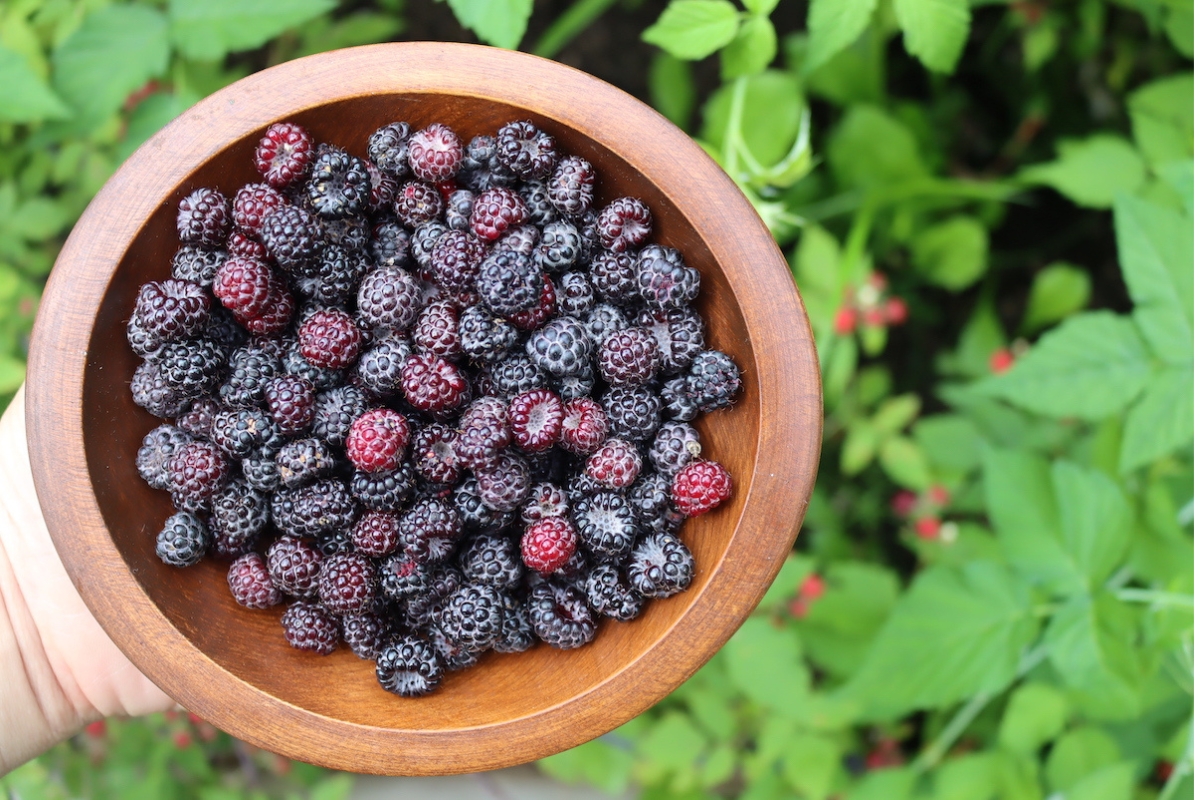
While you can easily pick up blackberries or raspberries at the supermarket, black raspberries are one of those things that’s just impossible to get unless you go out there and harvest them yourself.
They’re difficult to cultivate, at least commercially, though they’re relatively easy on a backyard scale. Unlike regular raspberries that fruit on long single canes, black raspberries are branching and they just don’t grow in orderly rows.
That makes them the perfect candidate for haphazard growing at the edges of woodlands or hedgerows, but they’ll never really be grown on a huge farm.
That’s one of the things that makes black raspberries special. They’re always wild, and just will not be tamed into neat tractor-managed rows.
(If you can’t find them in the wild, don’t worry. They are available online from Foraged Market, where foragers sell their hard-earned caches to help make ends meet. It’s a great way to support small-scale local foragers and try something wild at the same time.)
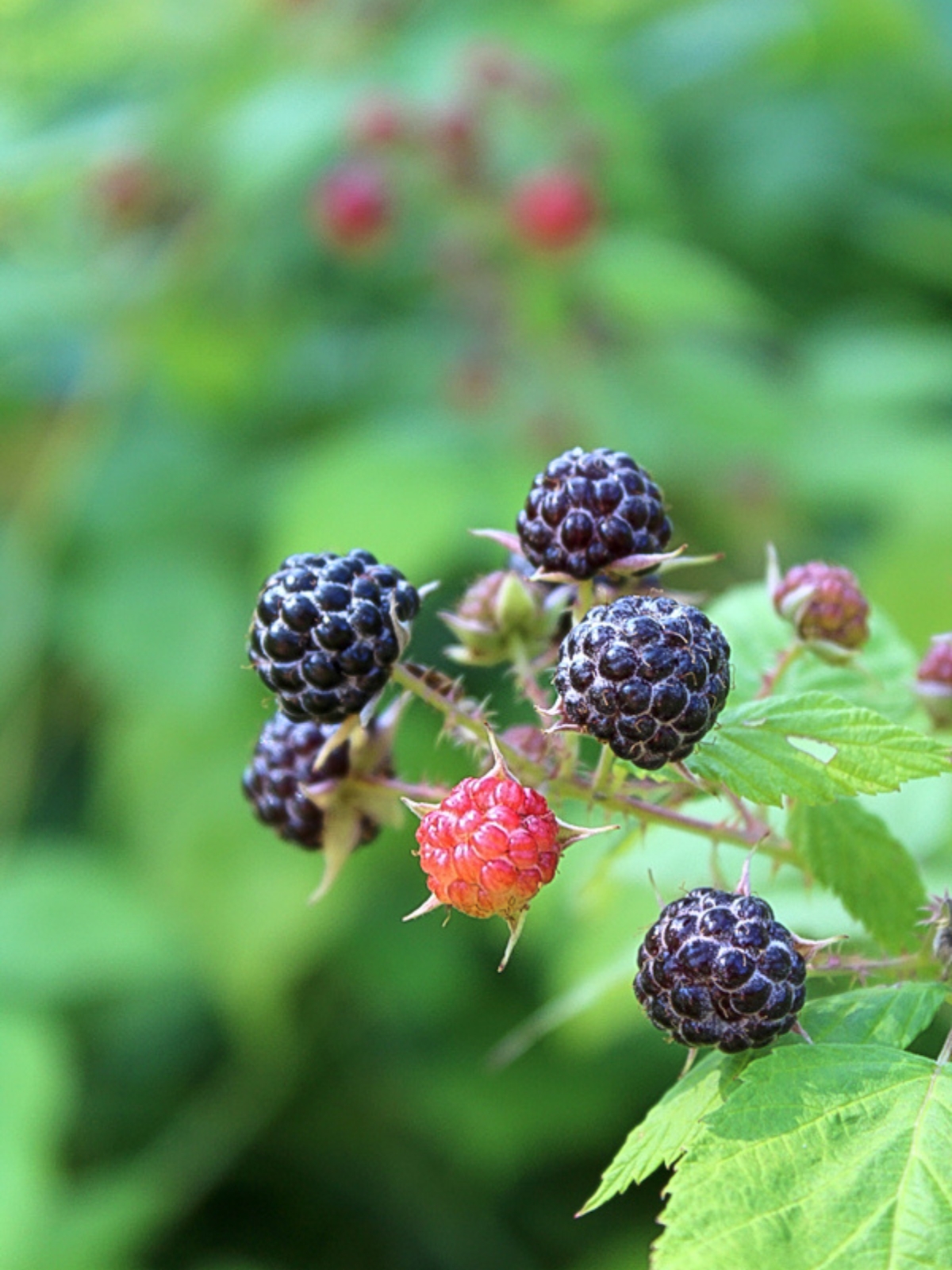
What are Black Raspberries?
Black Raspberry (Rubus occidentalis) is a perennial, deciduous, fruiting shrub in the Rubus or Raspberry genus. You may also hear these bushes called Bear’s Eye Blackberry, Black Cap, Black Cap Raspberry, or Scotch Cap.
This species is native to eastern North America. Today it is grown commercially in other countries and other locations in North America.
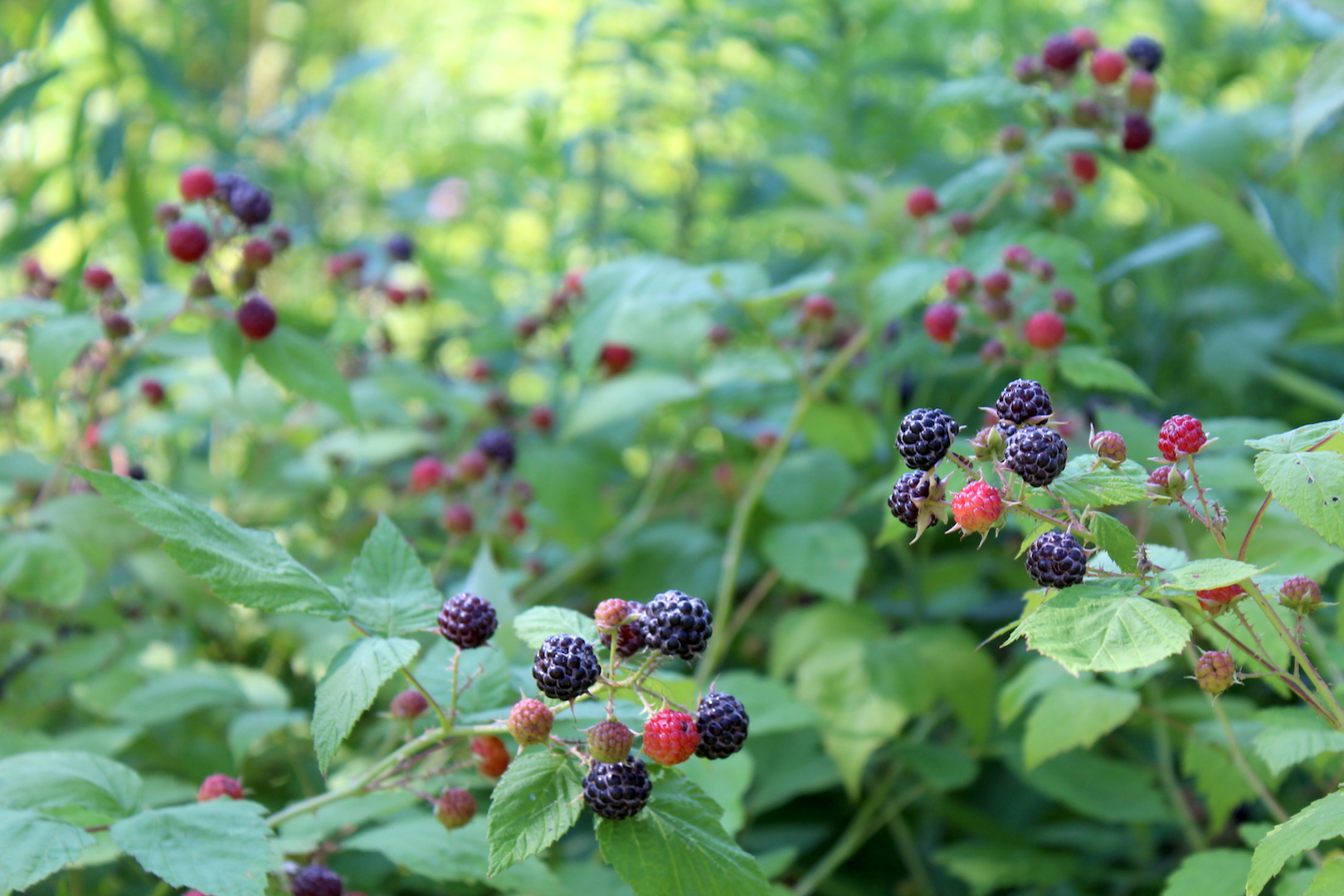
Is Black Raspberry Edible?
Black Raspberry is a helpful, common edible plant. The dark berries are prized wild edibles that are tasty and sweet, eaten fresh off the bush or cooked. The leaves make an excellent tea.
Herbalists also use the berries, leaves, and roots in various internal and external preparations. Black Raspberry is a safe plant, and there are no known precautions.
Avoid harvesting Black Raspberries along roadsides where they may be contaminated by car exhaust and other chemicals.
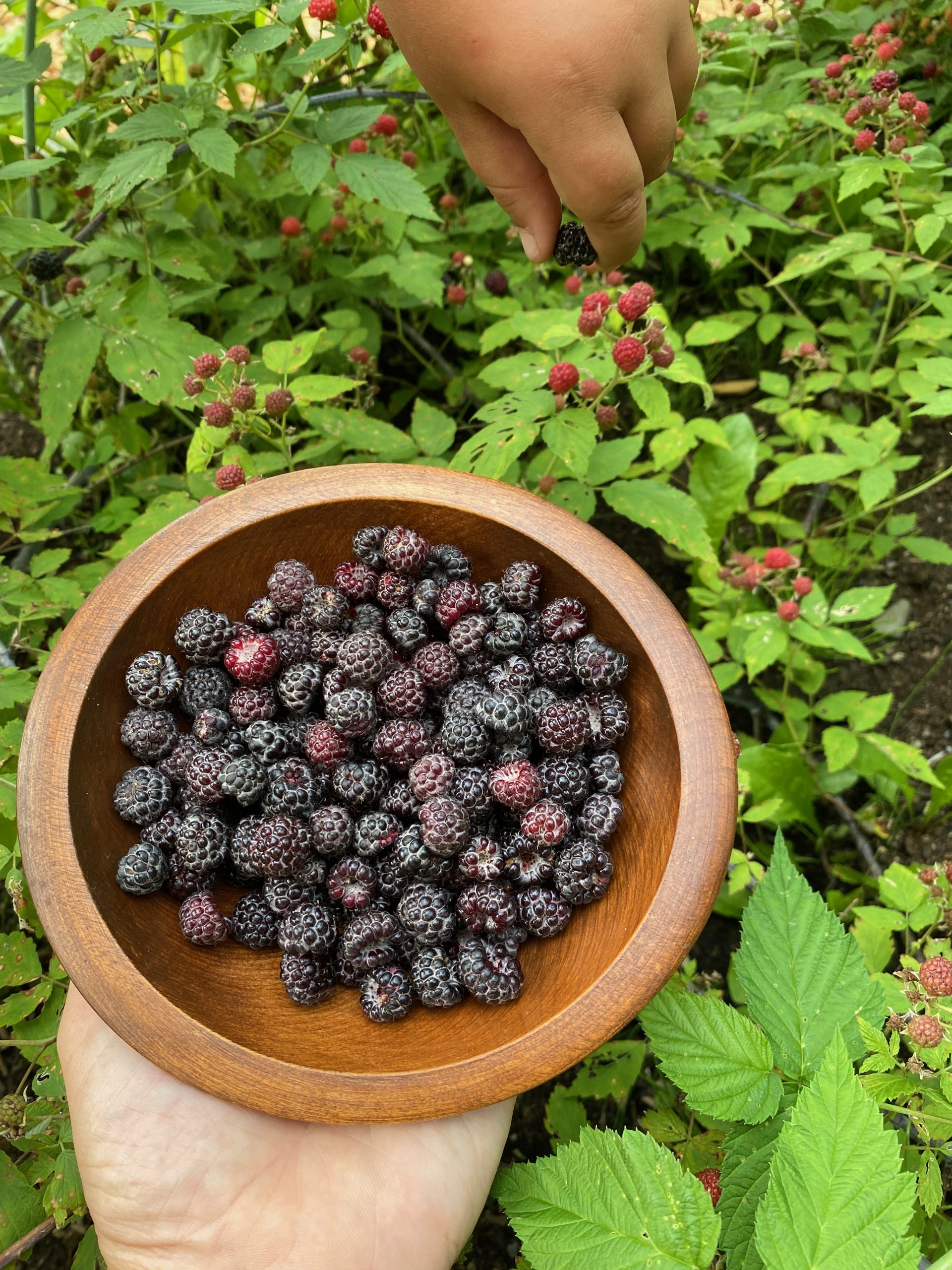
Black Raspberry Medicinal Benefits
The berries of the Black Raspberry plant are as healthy as they are tasty. They are high in antioxidants, vitamins A, B, C, and E, minerals, and volatile oils. Herbalists believe these berries have diuretic, diaphoretic, mildly laxative, and cleansing properties.
The berries have been the primary focus of modern medicine and numerous studies have explored their effects on preventing and treating cancer. Many of these studies have shown that Black Raspberries inhibit multiple stages of oral, esophageal, and colon cancer. One 2011 study showed that Black Raspberry extracts significantly inhibited the growth of colon cancer cells.
Another study has shown that Black Raspberry extracts may help alleviate the symptoms associated with high-fat diets. A study done on rats eating a high-fat diet found that the Blackberry Extract helped reduce their high cholesterol and liver inflammation.
The berries may also improve vascular function. A randomized study found that Black Raspberry extract significantly lowered blood pressure in prehypertensive patients.
However, it’s the leaves that herbalists most commonly reach for, using them to make teas, tinctures, and infusions. The leaves also contain important vitamins like A, B, and C and minerals, including iron, manganese, magnesium, and selenium. Additionally, they contain important medicinal compounds, including fragarine, tannins, polypeptides, and flavonoids.
Herbalists use teas from these potent leaves to treat diarrhea, menstrual pain, sore throats, and stomach pain. Herbalists also frequently use them to aid in pregnancy, helping to prevent miscarriage and easing morning sickness and labor pains.
Herbalists will also use the leaves in external preparations, as a poultice on bee stings, as a wash for irritated eyes, wounds, and sores, or as mouthwashes for mouth ulcers, gum inflammation, and sore throats.
Some practitioners will also use the roots to create similar preparations. The roots are very astringent, and herbalists employ them to treat diarrhea, dysentery, stomach pain, gonorrhea, and back pain.
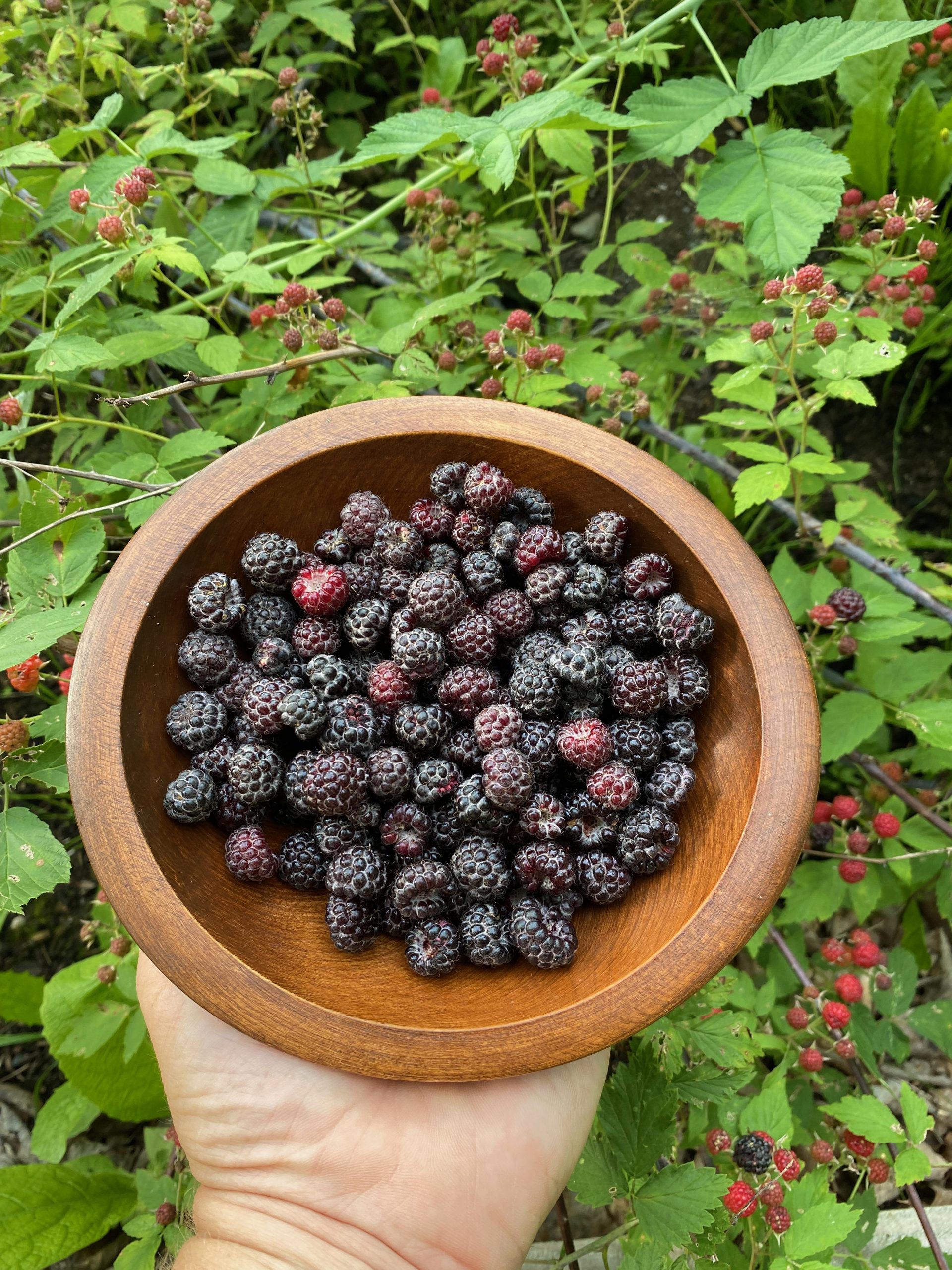
Where to Find Black Raspberry
Black Raspberry is native to eastern North America and can be found growing wild from as far north as Quebec to as far south as Mississippi, west to Nebraska, and east to New Brunswick. Today, it is cultivated for its berries, and you may find it on farms well outside its native range.
Black Raspberry is an early successional species that springs up quickly in disturbed habitats. You’ll often spot it coming up in recently logged areas. It also frequently grows along meadow edges, streambanks, railroad beds, trails, lakes, and roadways.
Black Raspberry thrives in full sun to partial shade. It will grow in nearly any soil, from clay to loam or sandy loam but needs well-drained, moist soil. It generally grows best in acidic soil.
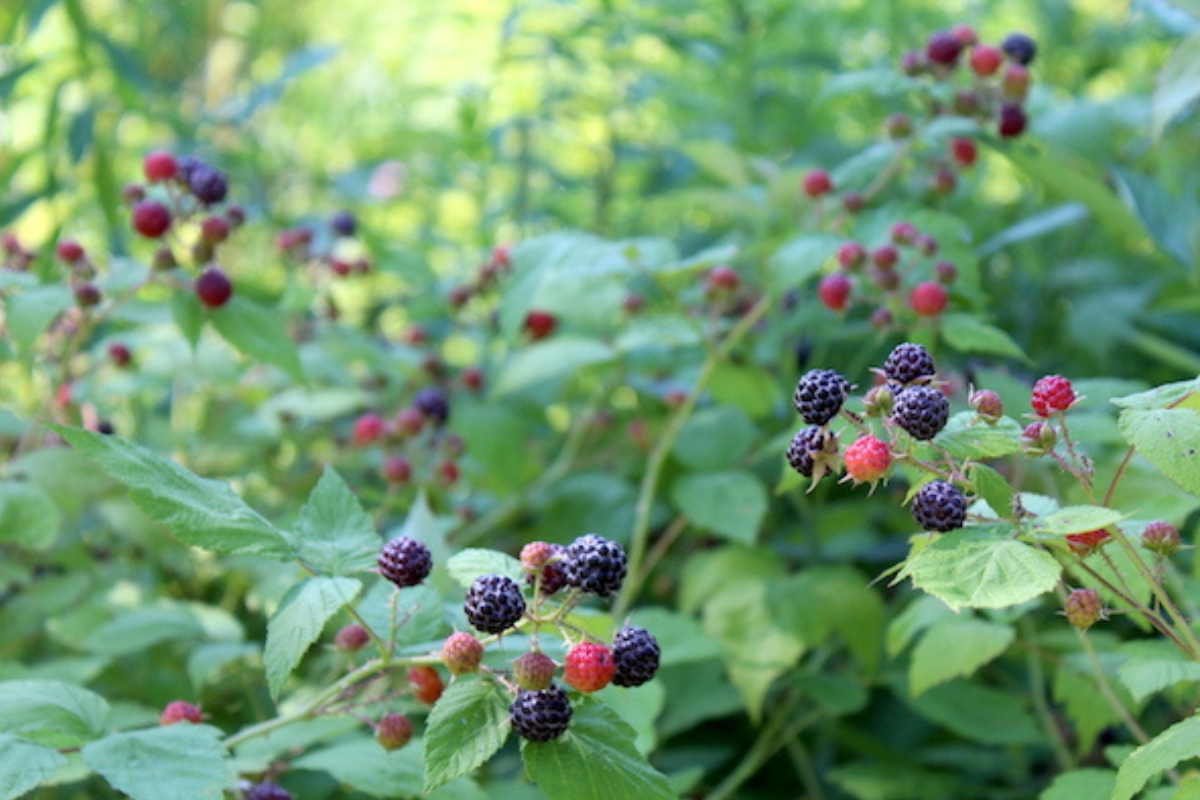
When to Find Black Raspberry
Black Raspberry is a deciduous perennial. It loses its leaves in the fall but doesn’t die back. You can still find the leafless canes through the winter. They leaf out with many other deciduous species in early spring and bloom shortly after in spring or early summer. Black Raspberry usually flowers for about 2 to 3 weeks.
In warmer climates in the southern parts of their range, Black Raspberries fruit in June, but in the cooler northern parts of their range, you won’t be able to harvest them until July. The season for Black Raspberries is fairly short. They only fruit for about 2 to 3 weeks.
The leaves can be harvested from spring to fall when cold frosts come. However, some herbalists recommend harvesting young leaves before the plants flower. These herbalists believe the leaves are most medicinally potent before the plant begins putting most of its energy into flowering and fruiting.
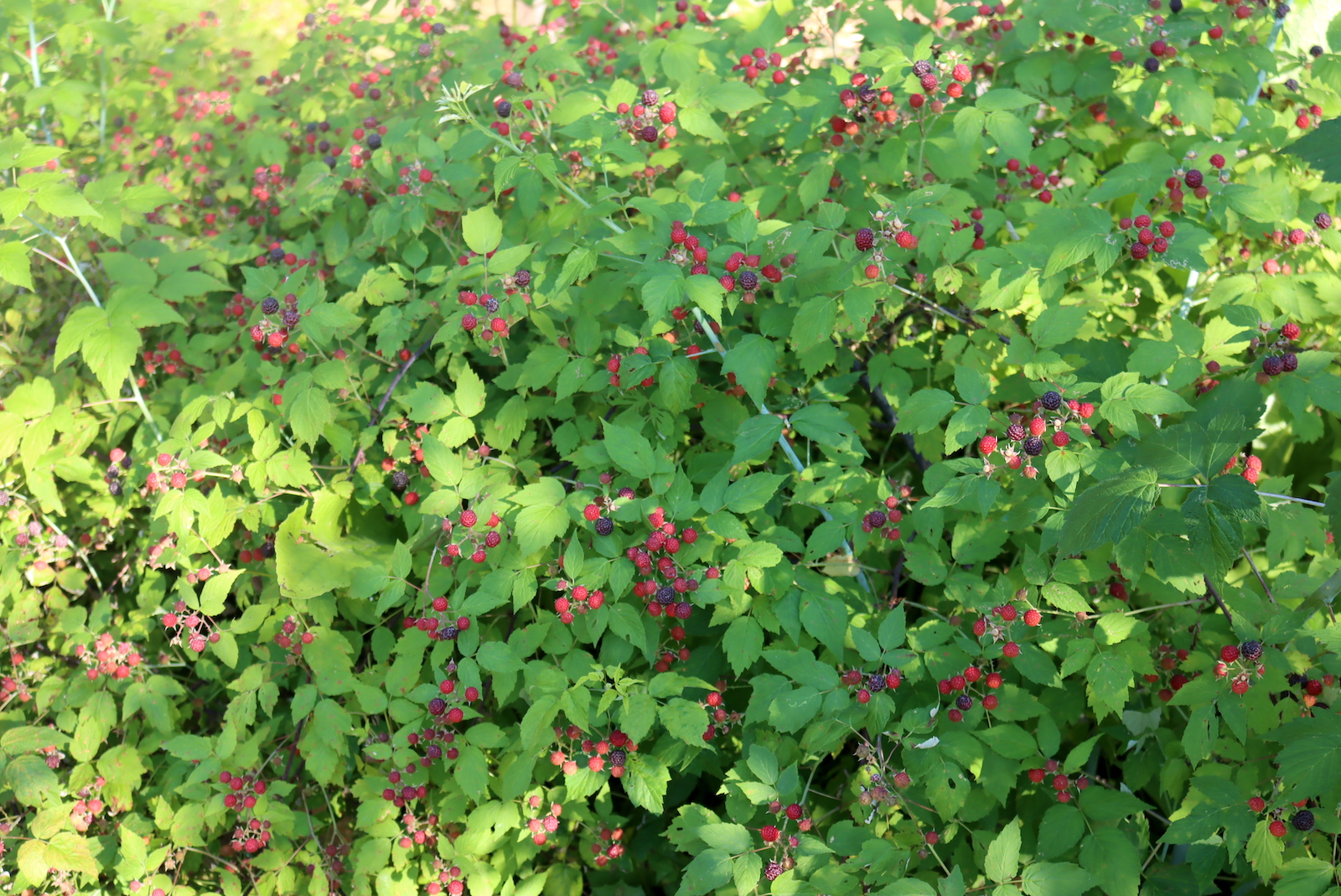
Identifying Black Raspberry
Black Raspberry has the characteristic long arching canes of the Rubus genus. Their similar compound leaves can make them tough to tell apart from related species like Blackberries or Red Raspberries at first glance. One of their most notable features is their bloom-covered whitish canes which you can often spot from a distance.
Black Raspberries can root and spread from their drooping canes, but they’re not nearly as aggressive as many Rubus species. Often you may spot a cluster of just a few plants rather than large, dominated patches of land like with Blackberries.
Their berries ripen from green to red to black or dark purple with a whitish bloom. They pull easily from the bush and are hollow-centered like Red Raspberries.
Black Raspberry Leaves
Black Raspberry has compound, alternately arranged leaves that are medium to dark green above and pale, whitish, or silver below. The upperside is usually almost smooth, while the underside is hairy. The leaves are held on small petioles (leaf stems).
Each leaf is composed of three or occasionally five leaflets. The leaflets are roughly egg or heart-shaped with double-toothed edges. They may be 2 to 4 inches long and 1.25 to 3 inches wide.

Black Raspberry Stems
Black Raspberry forms multiple long stems or canes from a center cluster. The canes may be up to 10 feet long, but their arching, drooping nature means they usually only reach 4 feet or less in height. The canes have widely spread sharp, curved, broad-based thorns.
First-year canes are usually light green or blue-green but often become reddish in their second year. The canes have a noticeable whitish bloom over them. Young canes may even appear completely white at first glance. When they’ve lost their leaves in the winter, the canes often become brownish.
The canes may root at the tips where they touch the ground and will propagate new plants.
Black Raspberry Flowers
Black Raspberry flowers aren’t very showy and form in clusters of 5 to 15 flowers near the tips of branches on the one-year-old stems. Each flower is white, about ½ inch in diameter, and usually has five petals surrounded by five pale green to gray-green sepals that spread or curve downward.
The center of each flower features a cluster of numerous styles surrounded by a ring of white stamens. The flower stalks have thorns and may be smooth or hairy.
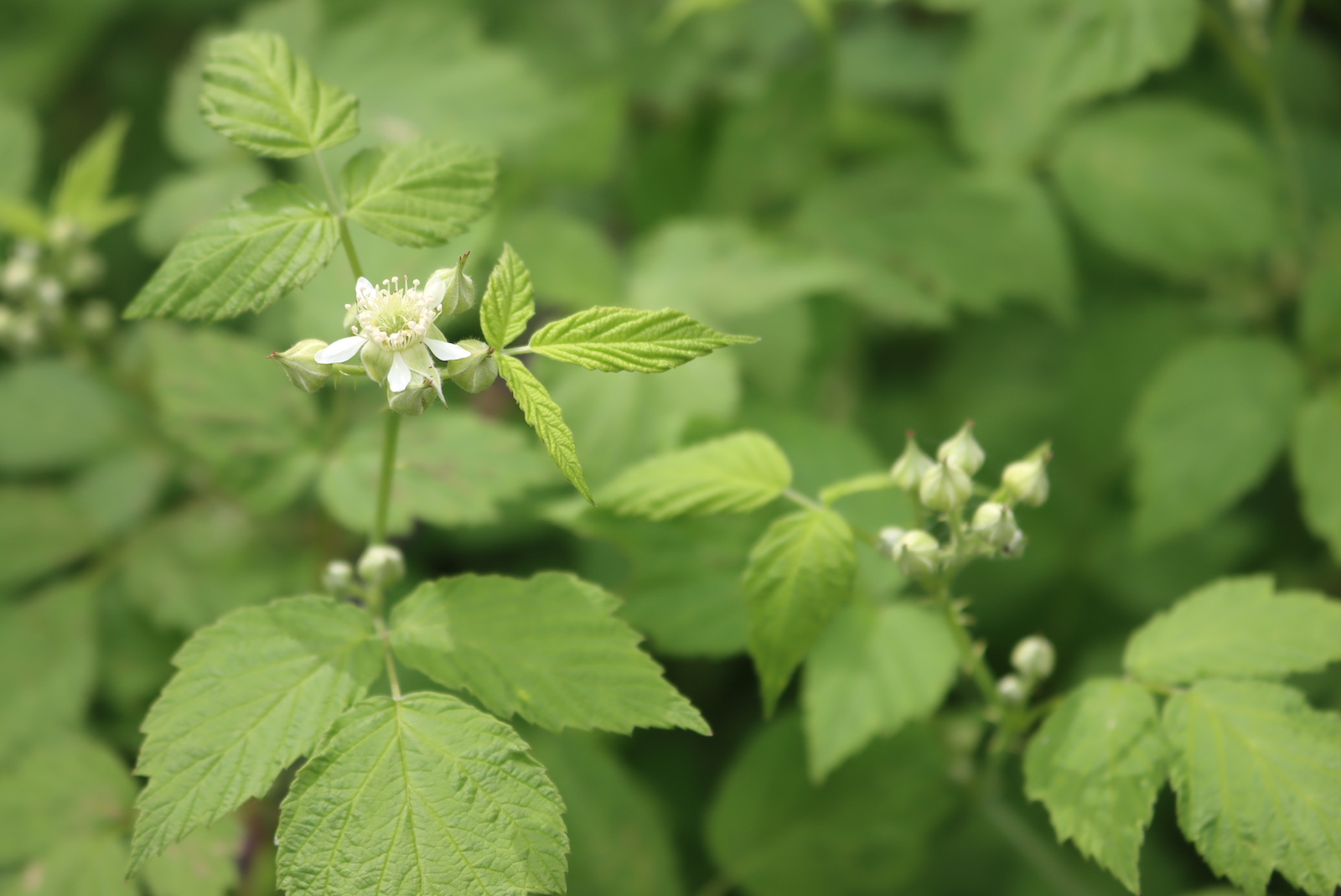
Black Raspberry Fruit
Black Raspberry berries are very much like Red Raspberries. They are hollow-centered, rounded clusters of fleshy drupes typically about ½ inch wide.
They ripen from green to red to black or dark purple and feature a white bloom like the canes.
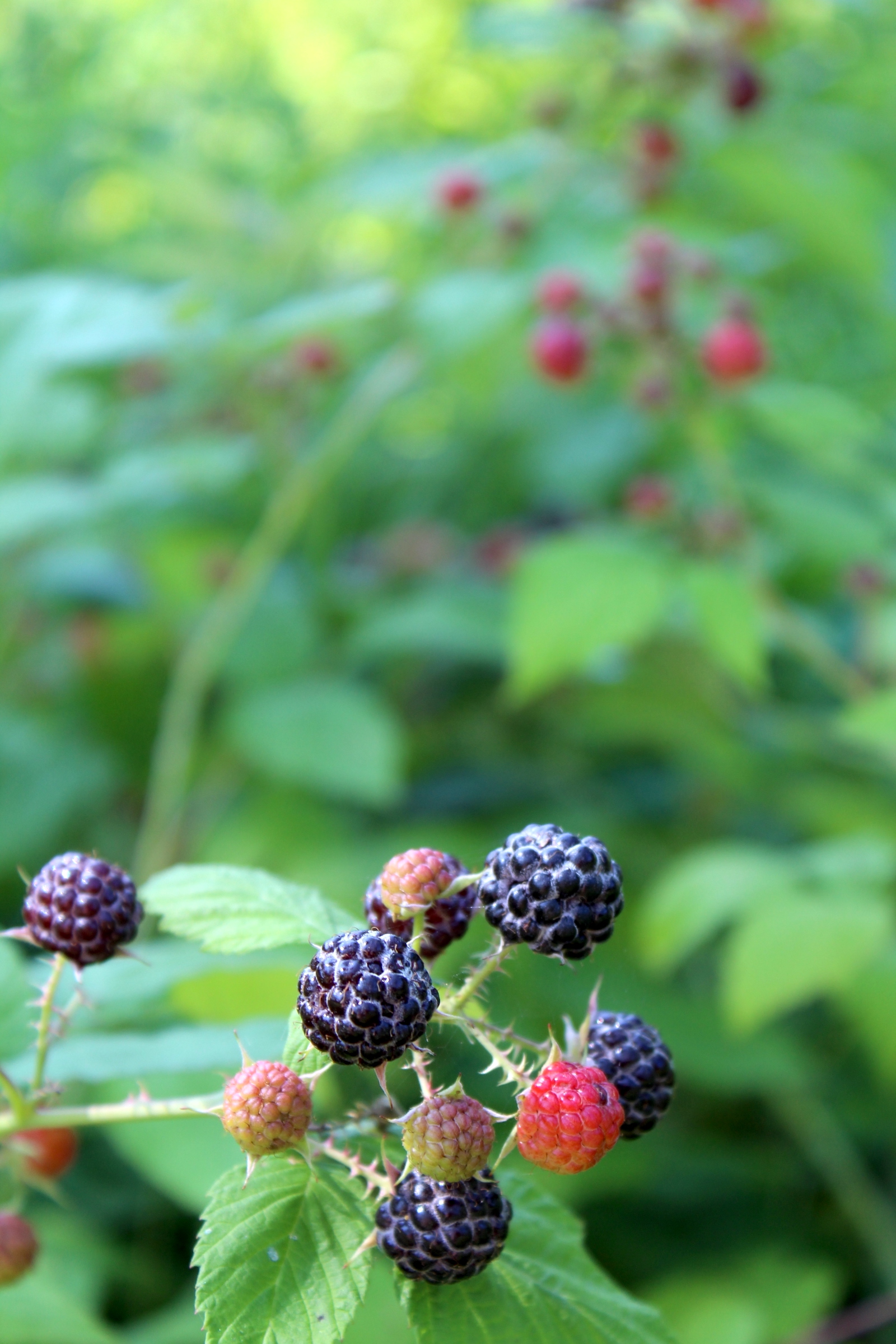
Black Raspberry Look-Alikes
Black Raspberries are sometimes mistaken for other Rubus species. The Pennsylvania Blackberry (Rubus pensilvanicus), with its similar berry color, is one such plant. However, you can easily distinguish the Pennsylvania Blackberry in the following ways:
- Pennsylvania Blackberry canes are green when young but become dark red with age.
- Pennsylvania Blackberry canes are usually ridged and covered with copious amounts of straight prickles.
- Blackberry leaves are compound and are typically composed of 5 to 7 leaflets.
- Blackberries have a soft green or white center and are not hollow.
Another lookalike is the American Red Raspberry (Rubus strigosus). However, it too differs in a few easy-to-spot ways:
- American Red Raspberry canes are usually greenish, purplish, or reddish.
- American Red Raspberry canes have stiff, prickly hairs rather than broad-based thorns.
- American Red Raspberries ripen to bright red.
Lastly, Black Raspberry can be mistaken for Thimbleberry, at least until the fruits are fully ripe. Thimbleberry can be recognized in the following ways:
- Thimbleberry has large, simple, palmate, maple-shaped leaves.
- Thimbleberry canes are thornless and sometimes covered in red bristly hair.
- Thimbleberry has large flowers ¾ to 2 ¼ inches in diameter, which are pinkish-purple in the eastern species.
- Thimbleberries are broad and shallow.
The main thing, in terms of fruit, that you’re looking for is a dark purple-black fruit that almost looks like a blackberry, but it has a hollow inside like a raspberry.
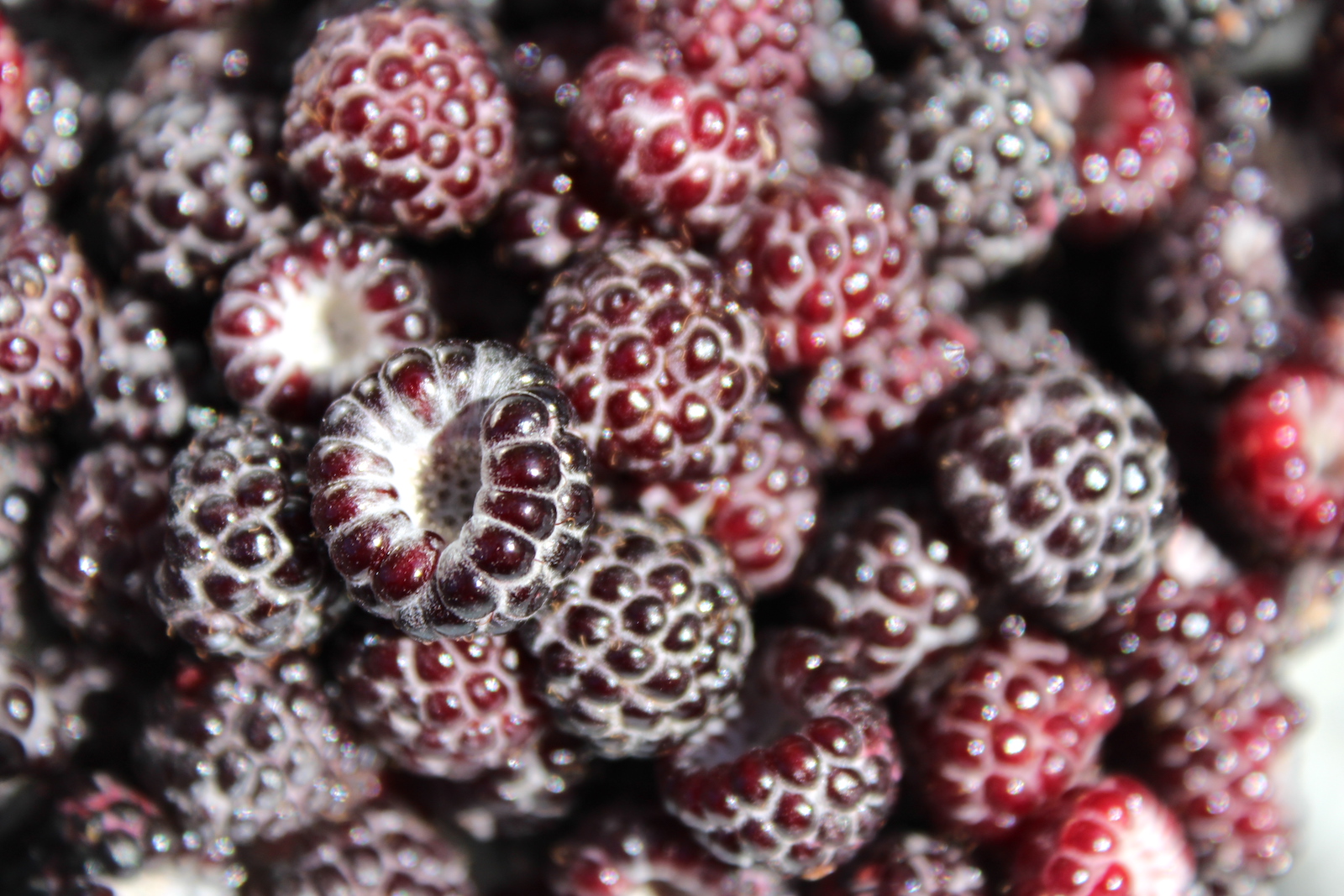
Ways to Use Black Raspberry
Black Raspberries are a better-known wild food because they are so tasty and simple to use. You may see hikers and foragers gathering them from field edges and trail sides, eating as they go. If you can gather plenty, they’re also amazing in various baked goods, including cobblers, pies, crumbles, muffins, cheesecake, scones, and pancakes.
You can also incorporate them into your diet in healthier ways, making tasty Black Raspberry vinaigrettes for salad, sprinkling them over yogurt bowls, or blending them up in smoothies.
Black Raspberries are also easy to preserve for later use. You can freeze them, dehydrate them alone or in leather with other fruits, or can them as jams, jellies, syrups, or pie fillings. They also make an excellent addition to apple sauce.
The fresh berries, syrup, or jam are also great additions to many drinks. You can use them to make your own signature wild foraged cocktails or mocktails or add them to simple summer favorites like iced tea or lemonade.
It’s also worth harvesting the leaves. They are potent medicinal herbs and make a tasty tea. Use Black Raspberry leaf teas, infusions, tinctures, or vinegars to help ease menstrual symptoms, diarrhea, stomach pain, and sore throats. When using it to help treat menstrual issues, herbalists often recommend mixing the leaves in tea with other herbs, including Red Clover, Oats, and Nettles. The leaves also make an excellent mouthwash for sores and inflammation.
You can use the roots in a similar manner, including them in teas or tinctures. They’re very astringent and may also aid in treating ailments like sore throats, stomach issues, and diarrhea.
You can also use the leaves and roots externally. Create a poultice from the leaves for bee stings or wash mild wounds and irritations with an infusion of the leaves or roots.
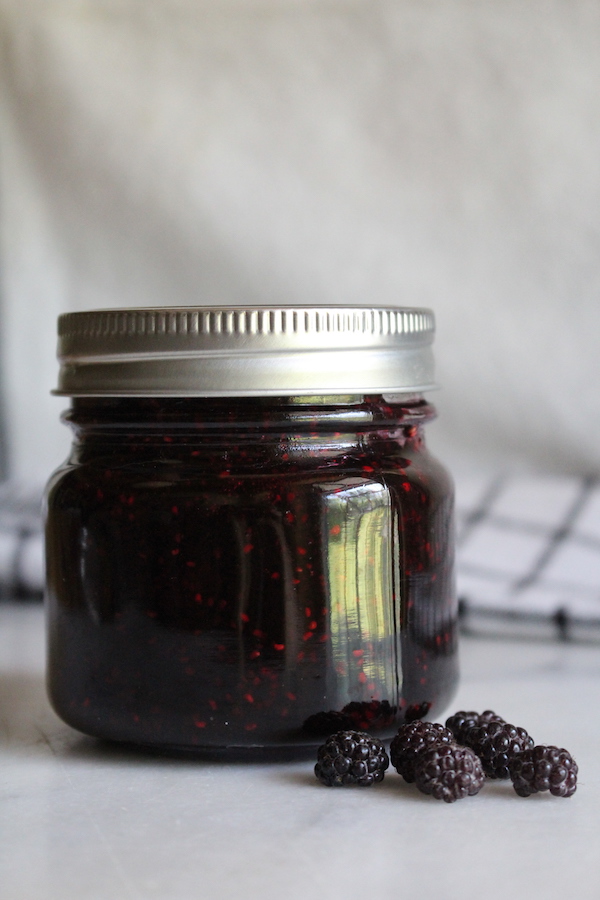
Black Raspberry Recipes
I’ve put together a collection of black raspberry recipes for every occasion, but here are a few to get you started:
- There are few summer treats better than homemade ice cream. Create your own exquisite Black Raspberry Ice Cream with this recipe from Ice Cream From Scratch.
- Make an impressive dessert for guests or your family with this tasty Black Raspberry Cobbler recipe from Saving Dessert.
- Create something as beautiful as it is tasty with this recipe for Black Raspberry Cheesecake Bars by Buttermilk by Sam.
- Hoping for something a little healthier? Try this Black Raspberry, Goat Cheese, & Pistachio Salad from Farm Fresh Feasts.
- Try our simple Black Raspberry Jam recipe to put up your harvest for winter.
- Hoping to reap the benefits of Black Raspberry leaves? Try using them in this simple raspberry leaf tea recipe from Chicken Scratch NY.
Fruit Foraging Guides
Looking for more tasty edible wild fruit?
- Foraging Bunchberries
- Foraging Saskatoons (Serviceberries)
- Foraging Wild Black Cherries
- Foraging Chokecherries
- Foraging Aronia (Black Chokeberry)
- Foraging Barberry
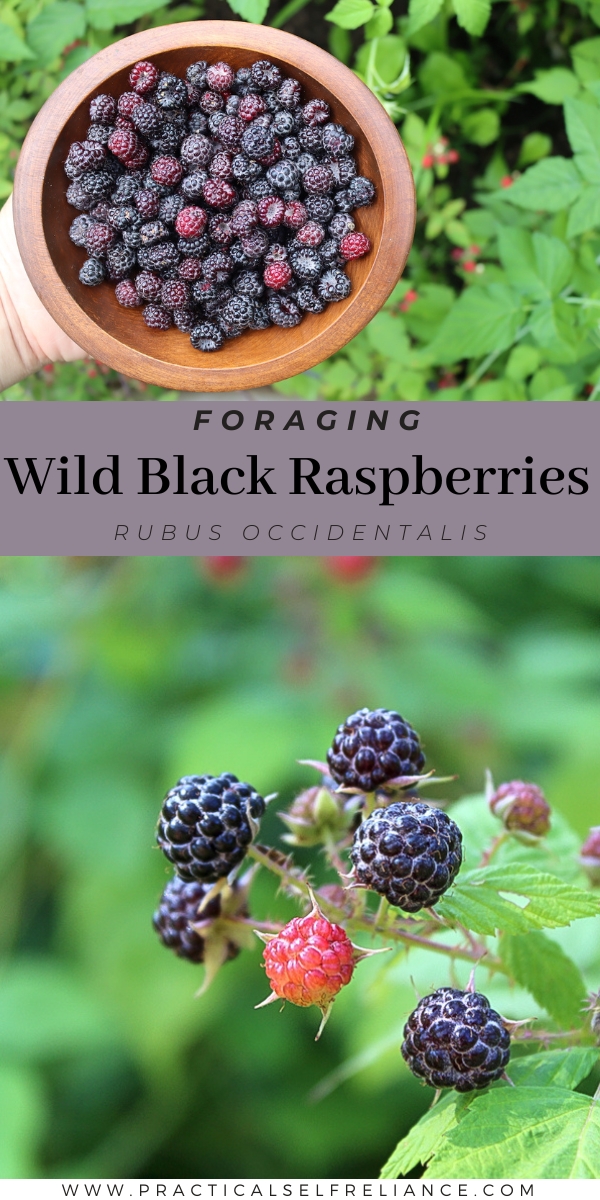



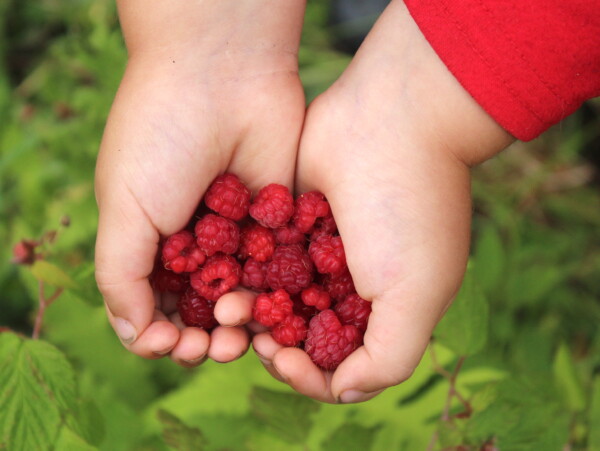










I have been picking mounds of black raspberries along the edge of the forest surrounding our fields the past couple of weeks. My forearms and calves look like I have been wrestling with a raccoon from fighting the thorns but it is worth it. Maybe someday I will wise up and put on a long sleeved shirt and long pants before I go picking.
I usually just freeze for winter what we don’t eat as we go but I have so many this year I think I will try a few of the recipes you have provided. Thanks again for all the great practical uses for something that has become a favourite summer treat.
I too always forget the long sleeves, but the scratches are worth it, as you say =)